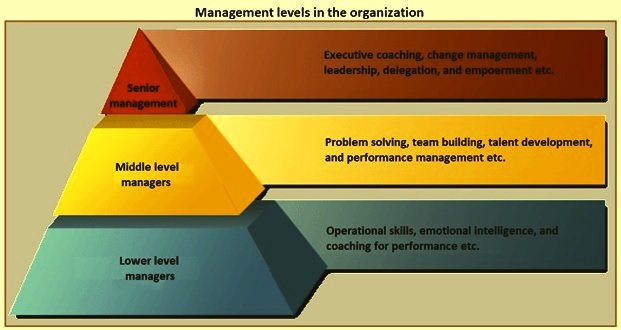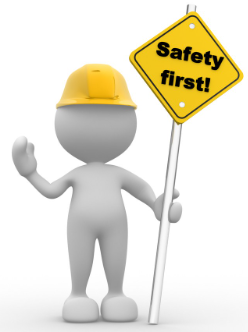Responsibilities of Directors and Senior Management of the Organization

Responsibilities of Directors and Senior Managers of the Organization and senior managers are appointed by the employer to ensure that the employer’s responsibilities of health and safety are met. Directors set priorities and play an essential role in making policies regarding health and safety and their implementation. They make sure that organizational health and safety aims, and objectives are suitable. The make sure that risk assessment is being carried out and appropriate control measure is in place to reduce risk .They have to lead by example, e.g. vesting a workplace to assess health and safety performance.
- They have to ensure sufficient resources are provided for establishing, putting in place and keeping in working order the health and safety management system. This also includes two things:
- Complete financial strength to deliver the objectives and purposes in the policy. Personnel/employees having a competency and required the ability to provide helping hands in the delivery of the policy aims and objectives.
- The faultless framework and mechanism of the Organization, showing clear roles and responsibilities of each section are implemented.
- Appointment of a senior manager with particular duties for health.
- Appointments of skilled persons for helping the Organization in performing health and safety functions.
- Regular review of the Organizational health and safety (usually annually) performance, ensuring the continual achievement of objectives and validity of objectives and measures in place is
- completed. They set the role and responsibilities of middle managers and establish machines for accountability against their duties.
Responsibilities of Middle Managers and Supervisors
Responsibilities of Directors and Senior Managers of the Organization Middle managers and supervisors are responsible for the health and safety standards of the workplace under their control regarding the operational functions because they are involved in the daily Organizational, operational activities. Responsibilities of Directors and Senior Managers of the Organization Their functional parts of obligations are usually defined and expressed clearly in the
Responsibilities of Directors and Senior Managers of the Organization Organization section of the policy. To ensure that workplace and all equipment are under their control are reasonably safe to work. There risk assessment is conducted and regularly revised on a suitable interval. Responsibilities of Directors and Senior Managers of the Organization Suitable and safe working procedures are established and implemented. Necessary training and instructions to staff under their control are being provided.
- The team under their supervision is suitably supervised.
- Workers under their control have provided with personal protective equipment’s
- They will organise work progress to ensure long working hours don’t put adverse health effect an workers.
- They have to ensure appropriate coordination between other managers working in the same
- area, workers and contractors.
- They have to provide consultation with workers under their control.
- Involve in the investigation of the accident and ill health case. Take part in accident/incident investigations and work-related ill-health.
- They have to keep the record of all safety events like accident, ill health, or risk assessment documents.
Responsibilities of Safety specialists :
it is the Employer responsibility to appoint a competent person (safety specialist) to assist in ensuring and implementation of the effective health and safety management system. By selecting a safety specialist does not remove line management responsibilities, but they help to line managers to fulfil their obligations These safety specialists may play their role as managers within the Organization or may be brought in from outside as contractors.

Responsibilities of Directors and Senior Managers of the Organization They assist in establishing health and safety policy, aims, objectives and plans. They provide support, advice, instruction, and guideline on health and safety management system implementation. They assist with top management to ensure compliance with health and safety law. They assist in risk evaluation and control measure implementation to control risk. They promote health and safety culture of positive type and support management in consultation with workers. They advise management for removal of risks of accidents and emergencies. To supervise the risk assessment procedure, also assist in safety performance evaluation, including accident investigation and carrying audits.
- They identify the requirements and needs of the type of different trainings and its gap with the national recommendation.
- They maintain health and safety records and documentation of data on health and safety performance, for example,
- Number and type of accidents/Incidents
- Amount and kind of ill health cases.
- The number of absence due to medical conditions.
Responsibility Resting with Contractors
Responsibilities of Directors and Senior Managers of the Organization Contractors have responsibility for their health and safety as well as of others who might have the effect of their work acts and actions. For instance, a contractor might be held accountable for bringing an instrument or power tool unsafe and unprotected in nature into the factory of a client Resultantly it causes injury or harm to any worker or a visitor. Responsibility rests with a client (as an employer) for the health and safety of his employees and the persons paying visit inside the workplace. Such liability is divided into the client and contractor. Most of the countries have established law to ensure that neither contractor nor employer or both could harm their workers and people.
So, it is vital to hire a contractor on the biases of contractor health and safety competency instead of price.
How to Select the Contractor :
Following information’s must be collated and assessed for the selection of the contractor.
- Does the contractor have a copy of their written health and safety policy a statement of line of action for ensuring health and safety standards? If the contractor has performed similar work risk assessment previously? If yes, request the
- recorded to assess suitability and competency regarding health and safety. Does the contractor have access to specialist advice on health and safety matters if required?
- The contractor monitors previous accident rate of the workplace and has a record? (copy should be submitted)
- What are the qualifications and training of staff within the contractor competency?
- The contractor or the staff member holds membership of a professional Organization like IOSH etc. or the member of a trade association?
- The contractor has an effective procedure for monitoring.
- What kind of training already contractors have provided to the staff to perform a similar
- job Third-party inspection certification records of plant and equipment.
- Names of previous or current clients with all details.
- Records of enforcement action taken by authorities against and civil claim against them.
- Proof of adequate resources, for instances, access to specialist safety instruction.
- * Will the contractor use subcontractors and if so, how the contractor will check that
- subcontractors are competent? Will they submit a method statement for the job?
- After the selection of the contractor, the client have to plan the work with the contractor to reduce accident probability.
How to Plan the Work :
To meet their (Client and Contractor) responsibilities, they must share health and safety information that could affect the work, for example,
- The client could provide information about all known hazards which exist in the workplace, like
- asbestos contained cement.
- The contracts will conduct risk assessments and foresee how the work activities and those performing in work interact with each other and how they increase risk and how it could be minimized.
- The contractor will submit a written safe working (usually called method statement) method to contractor detailing how the contractor and their team will perform work and avoid accidents.
- The client and contractor should communicate with each other and provide information’s, instruction and training to the contractor and their employees about the health and safety risk involved in job and control measures, as well emergency procedure.
- Client and the contractor should have to Co-operate and coordinate through regular meetings with the contractor to make ensure that the work activates can be done safely and without risks to health.
- They have to Consult the workforce on health and safety matters. This will help to make better decisions on the actual risks and controls.
- The client should manage and supervise the work according to the level of risk, i.e.. the highest the risk, the more you need to do.
Consider:
- responsibility for the work.
- responsibility for supervising.
- from creating any mutual confliction or clash. There may be various contractors busy in work an site at any one time, and the acts and deeds of one person or organization must not cause a hazard for another in the area.
- The client owns responsibility for the monitoring work activity if the performance of health and safety is not to acceptable the client should take action and stop work activity until the prevision of agreed arrangements.
Detailed Description About Joint Occupiers of Premises :
If two employers / contractors share a workplace together, it is easy to believe that the risks created
by one employer will impact the other employer’s employees. For example, Where multiple employers take office in the same place, the fire hazard created by one employer may have an impact on the safety of all the other employer in the form of harm, injury, threat, etc. All of them will always need to collaborate and organize their work activities in order to ensure acceptable standards of health and safety.
- They should have to conduct regular meetings with their managers;
- To prevent incidents and to carry out incompatible processes, they must exchange knowledge and risk assessments;
- They will set joint workplace rules, e.g. assembly points and approved smoking areas; They should set out joint command and management processes for visitors and contractors;
- They have to agree on a system for the management of traffic and the vehicle movement in the working area.
- They should conduct joint inspections of the workplace to identify and unsafe condition or act; They should draw up joint emergency procedures
- They should conduct joint fire drills for the worksite as a whole; They should establish a agree on a system for the management of waste.
